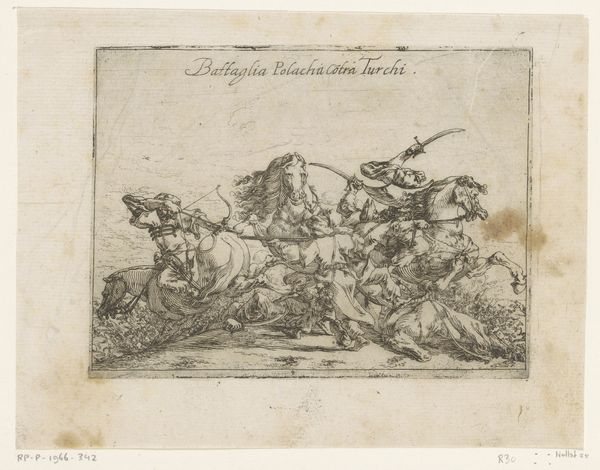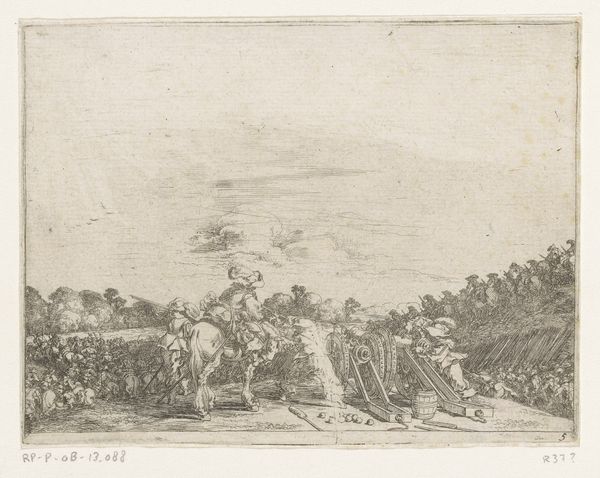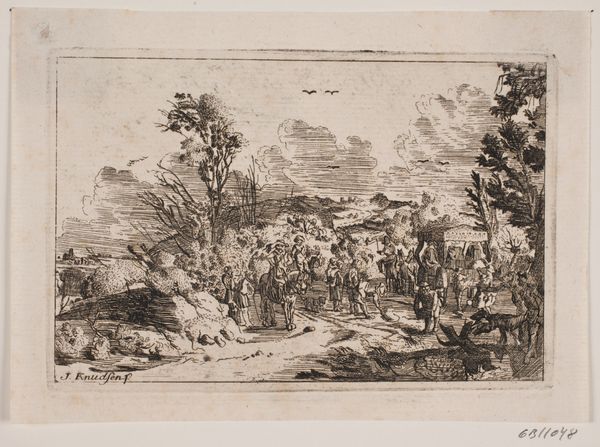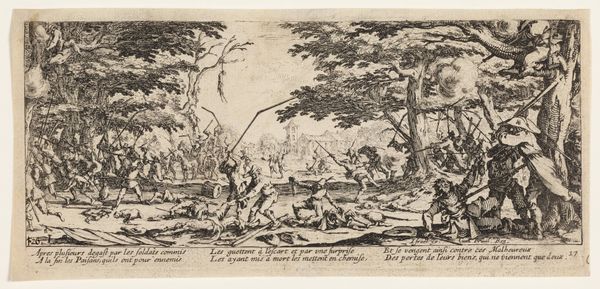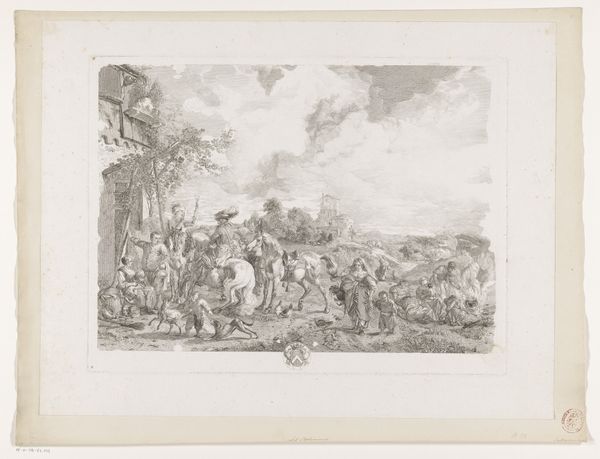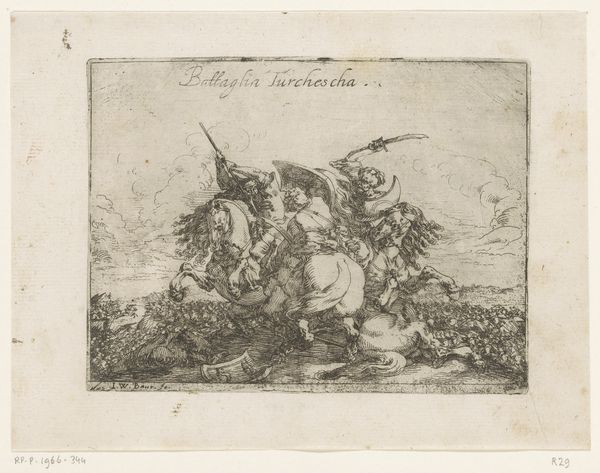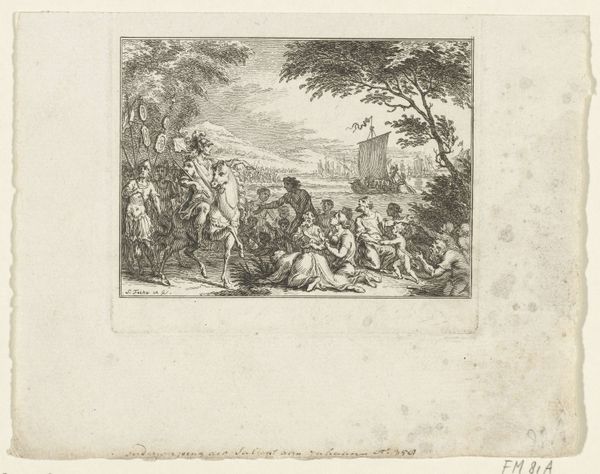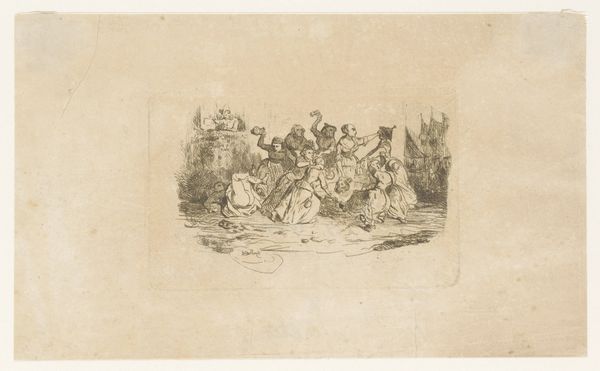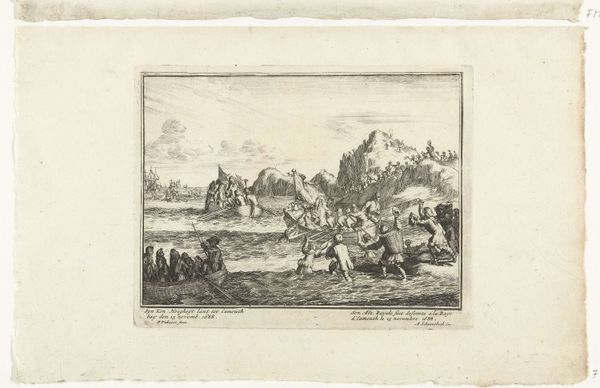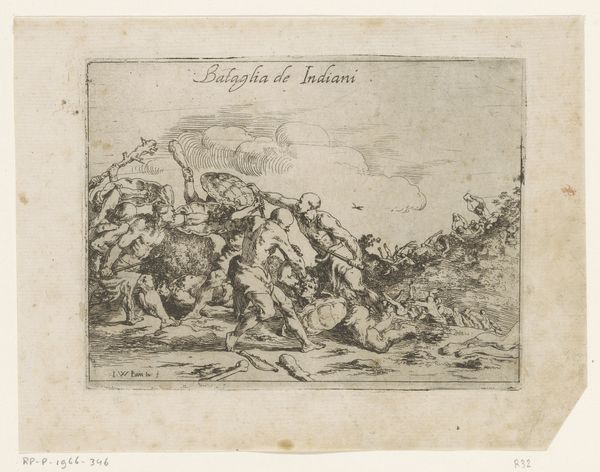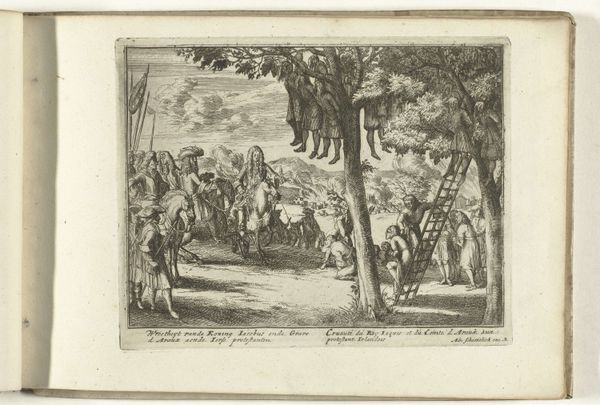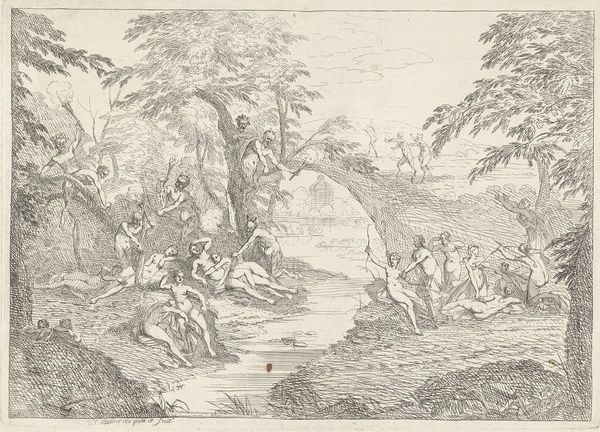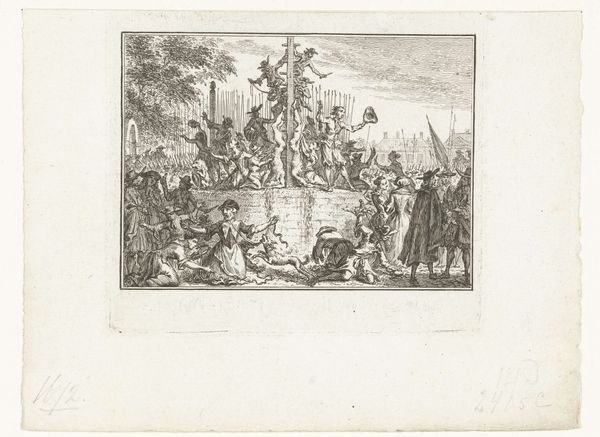
etching
#
baroque
#
etching
#
landscape
#
etching
#
figuration
#
history-painting
Dimensions: height 106 mm, width 139 mm
Copyright: Rijks Museum: Open Domain
Curator: Look at this, an etching titled "Spanjaarden in een veldslag", or "Spaniards in Battle", created around 1633 by Johann Wilhelm Baur. It resides here at the Rijksmuseum. Editor: Immediately, the smoky chaos grabs me. The frenetic energy, like a swarm of angry bees—it’s beautiful in its own disturbing way. What are the dynamics at play? Curator: The historical context here is key. The etching portrays a clash, likely during the Thirty Years' War, a conflict profoundly shaping Europe in the 17th century. Baur's work exists amidst an explosion of printed imagery that really catered to intense political and military events. We should recognize how these artworks, particularly around depictions of violence, also carry propagandistic or nationalistic weight. Editor: Propaganda, yeah! It’s hard to ignore that swirling, romantic sky, too. A perfect backdrop for some serious human drama. I keep thinking about what the smoke must smell like, the weight of those muskets. It feels almost tangible despite being just lines on paper. Is it trying to romanticize the gritty reality of war? Curator: Consider Baur’s audience: he catered to an elite that really did enjoy collecting depictions of such battles. But what are the implications when a faraway war is turned into decorative entertainment? The lack of individualized suffering is striking to me; the masses almost serve as decoration. Editor: I wonder if the figures were actually "Spanish.” To my eye, they could be anyone swallowed up by the endless machine of conflict. Did the artist experience this event personally, or is it all from secondary sources? I guess I’m always drawn to that question of authenticity. Curator: His direct experience of warfare is secondary, if present at all. It is important, I think, to unpack this disjunction to unearth underlying narratives on how distant violence is consumed. Editor: Right, the “spectacle.” What does this detached approach do to our understanding, and perhaps even our perception of accountability of past or even contemporary global events? Curator: Indeed, it fosters a distance and almost glorifies something destructive. Editor: Wow. Who knew such tiny lines could unpack so much history! This calls for a visit back to the drawing desk—or in Baur's case, maybe the etching press! Curator: Absolutely! This print is much more than an image, I think— it serves as an access point for reflection.
Comments
No comments
Be the first to comment and join the conversation on the ultimate creative platform.
